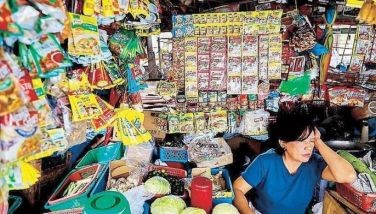S&P sees RP's monetary policy remaining tight
Standard & Poor’s (S&P) expects the country’s monetary policy to remain tight, with growth ranging at 4.3 to 4.8 percent this year and four to 4.5 percent in 2009.
S&P said yesterday that inflation remained the government’s predominant challenge, reinforced by high commodity import payments. But balance of payments would also be supported by high remittances, which would stimulate domestic consumption.
S&P noted that the economy saw a 4.7- percent and 4.6-percent growth in the first and second quarters of 2008 following a higher-than-expected growth of 7.3 percent in the fourth-quarter of 2007.
“The monetary stance is likely to remain tight,” S&P said.
The credit agency said private domestic demand and government consumption moderated in the second quarter of this year but investment growth rebounded.
According to S&P, private demand continued to be underpinned by healthy remittance inflows, which increased at 12.1 percent in the first half of 2008.
But S&P said weak external demand for electronic products, which account for two-thirds of the country’s total exports, would continue to weigh down the country’s overall economic growth.
What would moderate economic growth in 2008 and 2009, according to S&P, would be the depreciation of the peso against the dollar which was still not enough to offset low demand.
S&P said consumer price inflation has fallen from 12.5 percent in August to 11.9 percent in September and finally to 11.2 percent in October as food and fuel prices drove prices.
Although prices have started to ease, however, the Philippines is still the world’s largest importer of rice and a net importer of oil, which meant that the economy is still highly vulnerable to external shocks.
“This is obvious from the rapid rise in core inflation in the corresponding period,” S&P said. Core inflation rose to 7.5 percent in September after rising at an average 5.5 percent during the first eight months of this year.
In the meantime, the trade deficit rose sharply to $5.3 billion during January-July compared to a $1.7 billion deficit last year. S&P attributed this to a high food (especially rice) and oil import bill.
While the drop in electronic exports has pulled down overall export growth to 4.1 percent, S&P said the 62.9-percent growth in fuels and minerals imports has pushed up imports to $35.4 billion (15.8 percent higher).
Consequently, S&P said the current account surplus consequently declined to $1.7 billion, which compared with a surplus of $ 3.6 billion last year.
- Latest
- Trending


























